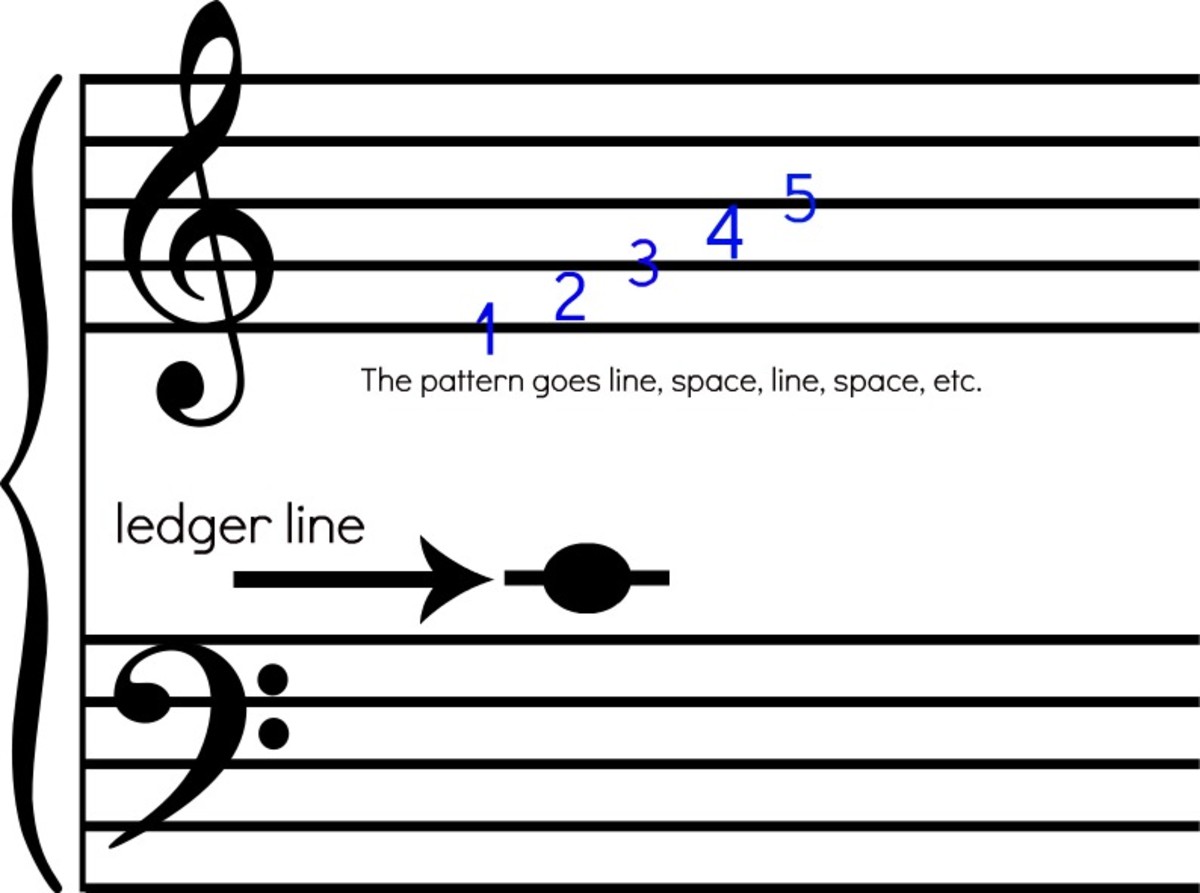Intervals
Intervals in music are the space between two notes. The simplest way to look at this is by counting notes.
There are two types of intervals, harmonic or melodic.
The difference? One is stacked vertically, so the notes are played at the same time, and one is not stacked, so the notes are played one after the other.
The way we deal with these intervals and figure out what the interval (or distance) is, does not change from harmonic to melodic. The formula is exactly the same for both.
So how do you do it?
By counting from the bottom note up to the top one. That means, even in the case of a melodic interval, you are going to start with the lower of the two even if it comes after the higher note.
You always begin counting an interval by beginning with the lowest of the two notes.
Here are a bunch of harmonic intervals. They all start on the note C.
Let's look at how that was figured out; we will focus on the 5th.
Step 1: Identify the lowest of the two notes
1. The lowest of the two notes is C
Step 2: Identify the highest of the two notes
2. The highest of the two notes is G
Step 3: Count the distance between the two.
3. There are two ways to do this:
- Option 1: count the letter names using the Musical Alphabet Clock:
- Option 2: Count up the stave using the line-space-line or space-line-space pattern, depending on where you start.

Important Rule to Remember:
ALWAYS INCLUDE THE NOTES THEMSELVES.
In the case of our example, C is first and G is 5th. So when you are counting, you count C as number 1, D2, E3, F4 and include G as 5.
The interval can then be described as a 5th
Now applying the same formula, look at these melodic intervals:
Quite simple, no?




No comments:
Post a Comment
All comments will be moderated.